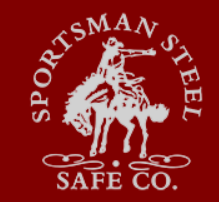Some individuals believe it is safer to show a teenager how to use a pistol properly rather than waiting for him to explore on his own because children are naturally intrigued about things we limit their access to. A kid can learn the seriousness of using a weapon by firing a few bullets in an isolated area or at a firing range. Teenagers who use a gun in the presence of an adult are less likely to do so independently. Even if you inform your children that there is a gun in the house and educate them on using it safely, you should keep the weapon locked up in a gun safe and the ammo in a separate safe for added security.
Level of Security
The greater the fire rating and the more secure the locking system, the heavier the gauge of steel (8 to 12-gauge is optimum). The classifications below provide a broad guideline for determining a gun safe’s level of security. This is important to ensure the required level of protection and ensure that the homeowner’s insurance policy covers the firearms in the event of a loss. Individual plans may differ, so check with your insurance agent to see what security is required for the agency to cover your handgun investment.
UL stands for “Underwriters Laboratories” and is used in connection with one or more of the ratings listed below.
This grade is followed by a number, such as TL-15 or TL-30, indicating that the safe will survive attempts to pry it open with a pry bar or other tools for 15 or 30 minutes, respectively. The UL designation will normally be followed (e.g., UL TL-15), indicating that Underwriters Laboratories determined the 15-minute tool-resistant rating.
TR: This designation indicates that the safe is resistant to forced entry by torch or prying tools for up to 30 minutes. It can be paired with the TL designation, such as UL TRTL-30, to indicate that the safe is resistant to forced entry by torch or prying tools for up to 30 minutes.
If the designation X6 appears, it means the safe has been security tested on all six surfaces: the front, the four sides, the top, and the bottom. A grade like UL TRTL-15-X60 means that the safe will withstand forced entry for up to 15 minutes on all six sides using a torch or prying tools.
RSC (Residential Security Container): A gun safe with an RSC (Residential Security Container) rating may deter some thieves, but it is the lowest level of security. RSC gun safes are the least secure, with an RSC rating indicating that the safe will deter prying for up to five minutes.
Mechanisms of Protection
Some gun safes include mounting holes that allow the user to fasten the safe to wall studs, floor joists, or concrete, in addition to heavy-gauge steel, a robust lock, and fire protection. Some newer safes may also include tamper warnings, which sound like an alarm if an unauthorized effort is made to access the safe. In contrast, others may track and log every event when someone tries to access the safe.
